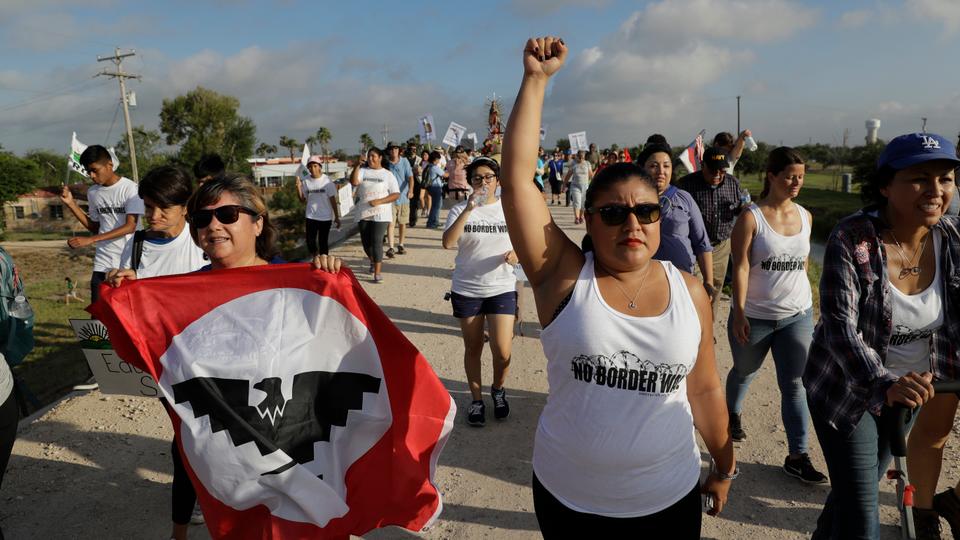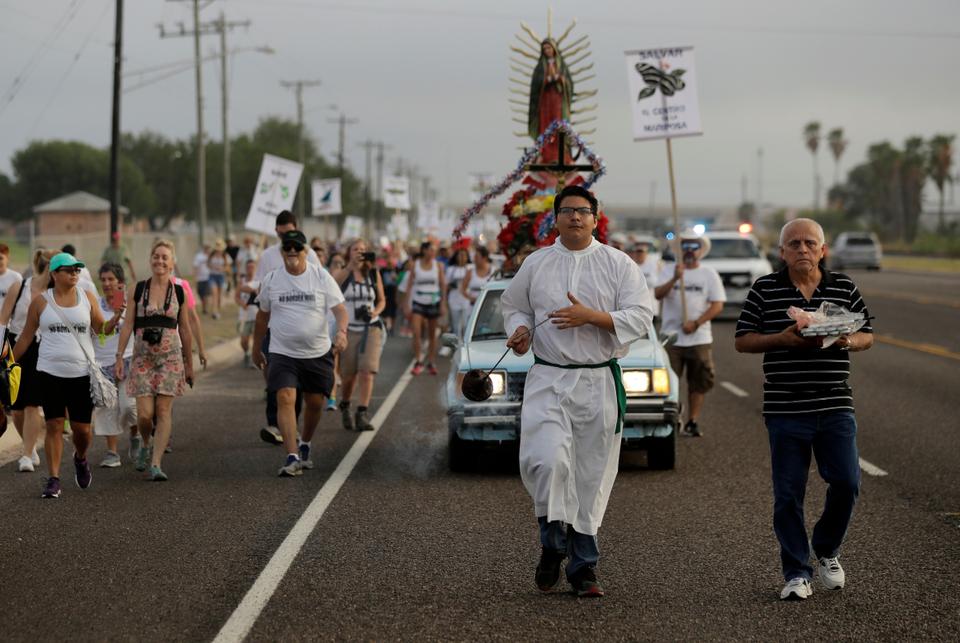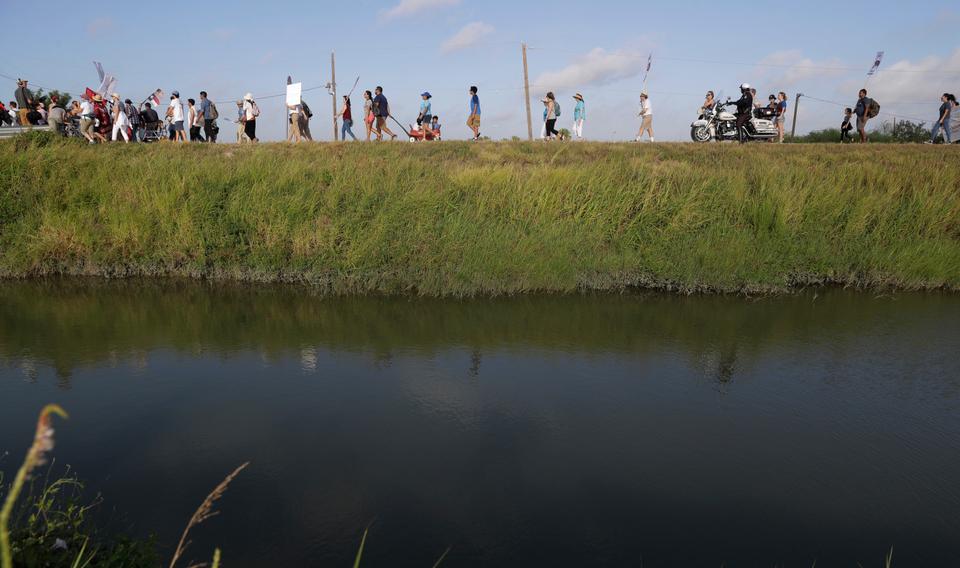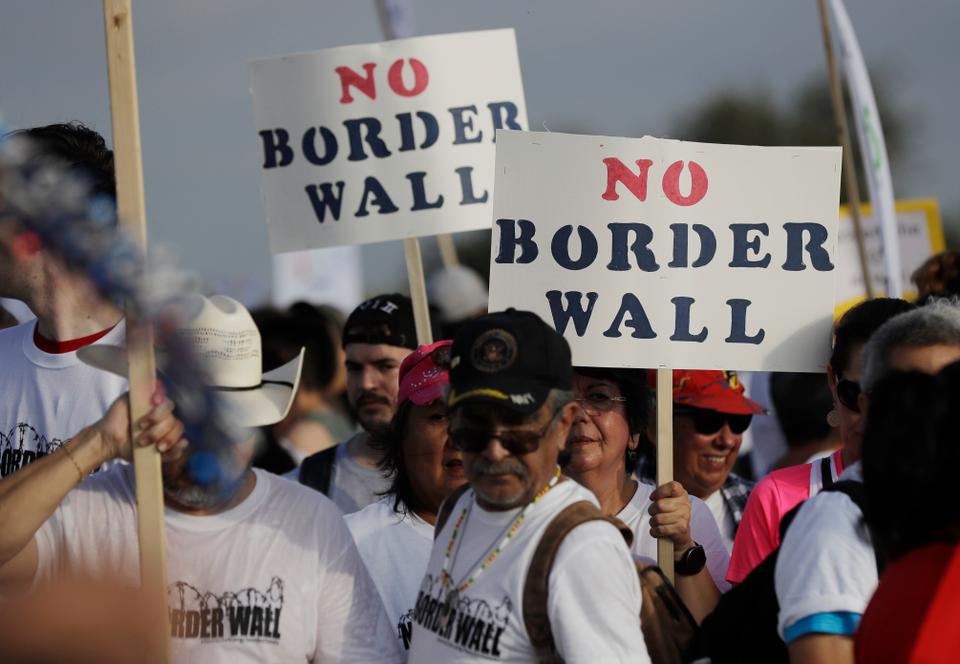Native Americans fear US-Mexico border wall will destroy ancient culture
 Diane Delgado raises her fist as she chants during a march along a levee toward the Rio Grande to oppose the wall the US government wants to build on the river separating Texas and Mexico, Saturday, August 12, 2017, in Mission, Texas. The area would be the target of new barrier construction under the Trump administration’s current plan. (AP)
Diane Delgado raises her fist as she chants during a march along a levee toward the Rio Grande to oppose the wall the US government wants to build on the river separating Texas and Mexico, Saturday, August 12, 2017, in Mission, Texas. The area would be the target of new barrier construction under the Trump administration’s current plan. (AP) Alter server Anthoney Saenz, second from right, waves incense as he helps lead a procession toward the Rio Grande to oppose the wall the US government wants to build on the river separating Texas and Mexico, Saturday, Aug. 12, 2017, in Mission, Texas. (AP)
Alter server Anthoney Saenz, second from right, waves incense as he helps lead a procession toward the Rio Grande to oppose the wall the US government wants to build on the river separating Texas and Mexico, Saturday, Aug. 12, 2017, in Mission, Texas. (AP) Hundreds of people march along a levee in South Texas toward the Rio Grande to oppose the wall the U.S. government wants to build on the river separating Texas and Mexico, Saturday, Aug. 12, 2017, in Mission, Texas. (AP)
Hundreds of people march along a levee in South Texas toward the Rio Grande to oppose the wall the U.S. government wants to build on the river separating Texas and Mexico, Saturday, Aug. 12, 2017, in Mission, Texas. (AP) Hundreds of people march along a levee in South Texas toward the Rio Grande to oppose the wall the US government wants to build on the river separating Texas and Mexico, Saturday, August 12, 2017, in Mission, Texas. (AP)
Hundreds of people march along a levee in South Texas toward the Rio Grande to oppose the wall the US government wants to build on the river separating Texas and Mexico, Saturday, August 12, 2017, in Mission, Texas. (AP)